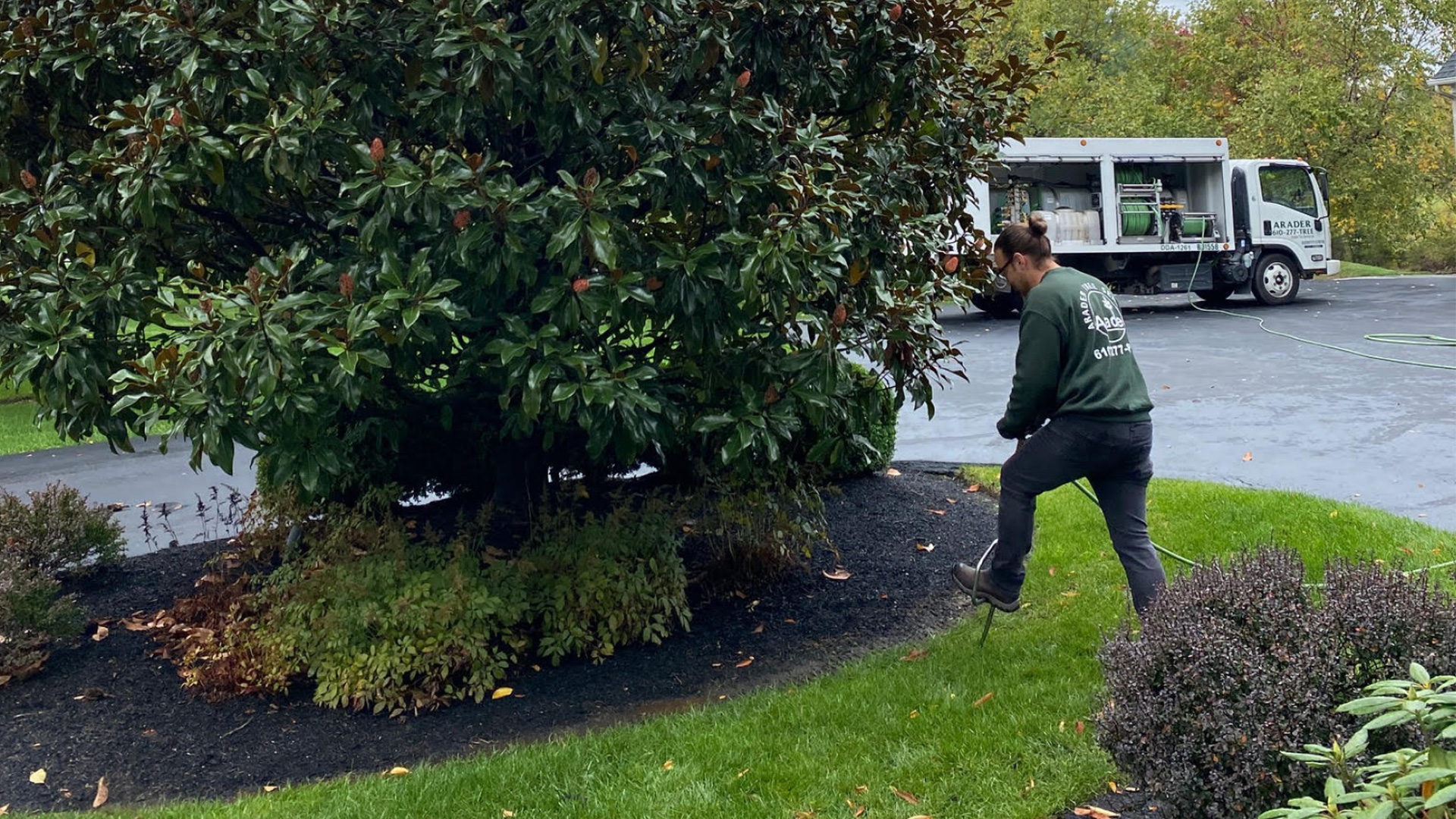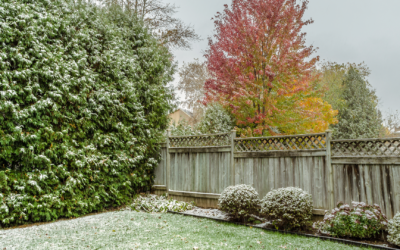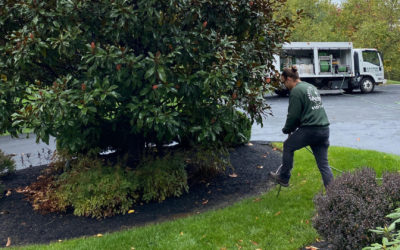The fall season provides a great opportunity for a variety of treatment options to prepare trees and shrubs for next spring. Before the leaves begin to change color and fall off, we can diagnose environmental stressors, pests or disease issues that need to be managed. Addressing the needs of roots is the most important part of the tree to consider for improving plant health. Both young and old trees with an established and healthy root system are more likely to survive extreme weather changes like drought as well as not be prone to common pests.
The top item on the list is to address girdling and strangling roots. These roots frequently occur when soil and mulch continue to build up where the main stem of the tree meets the soil line. The build-up of excess organic matter around the main stem of the tree creates an environment that allows roots to grow out from the tree trunk and into this welcoming environment. Over time, these roots increase in size and end up strangling the vascular system of the tree.
To correct this issue, we use compressed air, and a specialized tool called an Air Spade. Using the Air Spade, we can safely blow away the excess organic matter around the main stem of the tree. This uncovers the harmful roots that we can prune and remove.
After this is completed, the next step is to use the Air Spade to aerate the top foot of the soil underneath the canopy of the tree. This de-compacts the soil allowing more oxygen and water to move into the soil to the roots system.
Based on the need of the plants, fertilization of the root system should occur in the fall. Fertilizer is applied as a liquid with a probe that is injected into the top foot of the soil. This will encourage the new growth of roots and foliage next spring.
Depending on the weather pattern of the summer. Some pests can have a second or third generation that can unexpectedly cause damage to plants. If a treatment is not applied to be applied at the time. Preventative pest treatments can be applied in the fall. Two common pest issues in our area are Hemlock Whoolly Adelgid and Boxwood Leafminer. Both plant pests can have treatments applied in the fall to help provide control for the following season.
When the leaves finally fall off, it presents the single greatest time of year when structural pruning of trees and shrubs can be completed. Often, young shade trees are left to grow unchecked and turn into wide and broad trees. Through selective pruning, we can promote a single stem with a balanced canopy, and remove crossing and rubbing limbs.
Elm trees are one of the few trees that should only be pruned during the winter. This is because an insect, Elm Bark Beetle, can carry the disease spores on its body which causes the disease. The Elm Bark Beetle is inactive during the winter so the risk of an Elm being infected is significantly decreased. With an increased threat of Boxwood blight, Boxwood hedges can also be pruned in later winter to minimize the risk of disease.
Arader can help prepare you and your property for the change of weather! Reach out for more information or too book our service.




